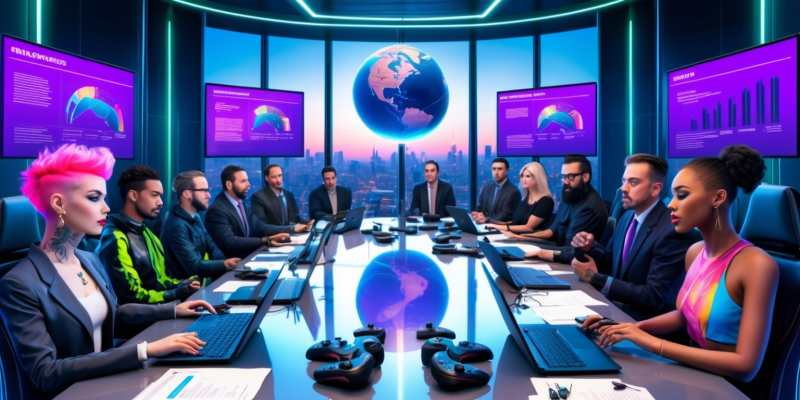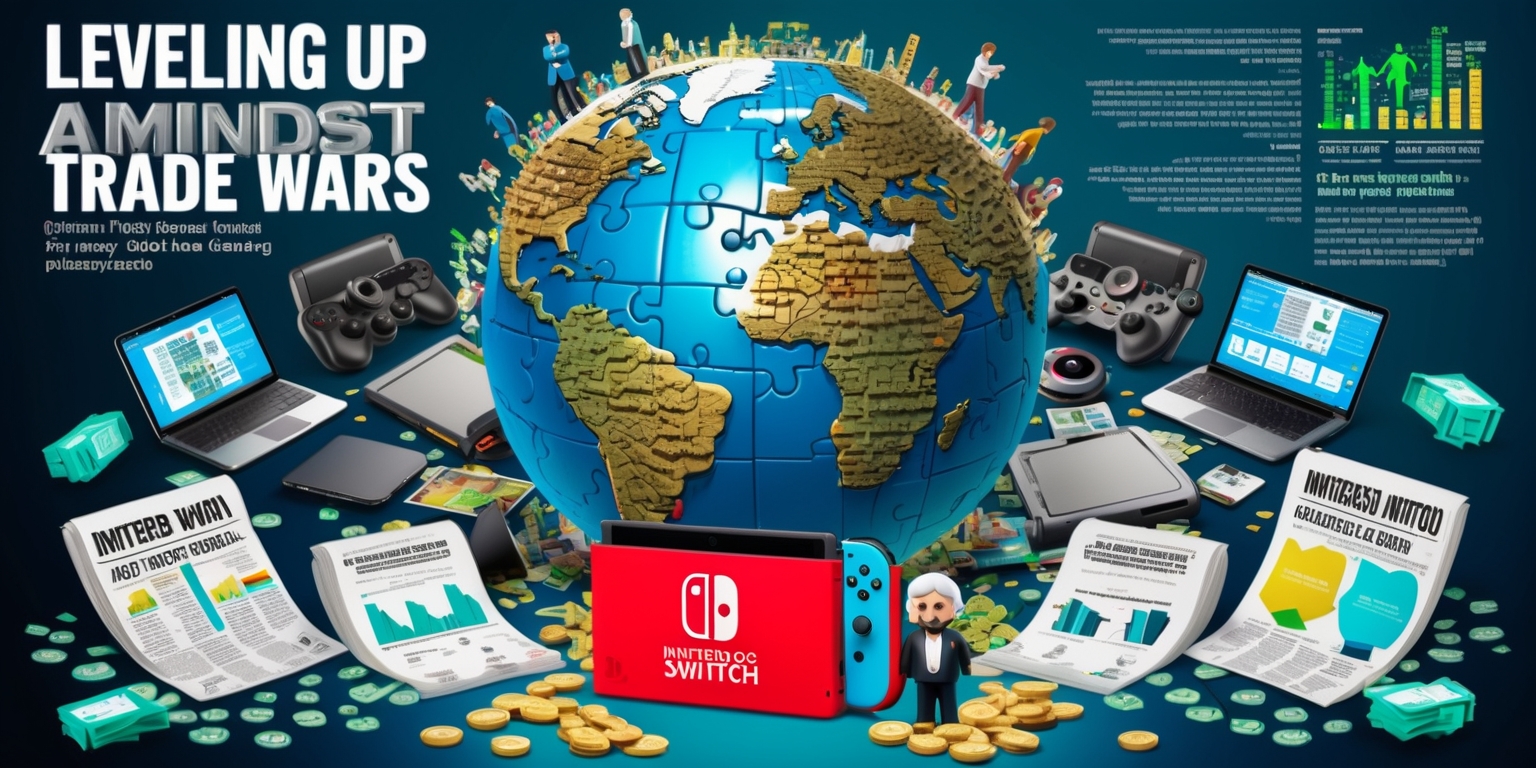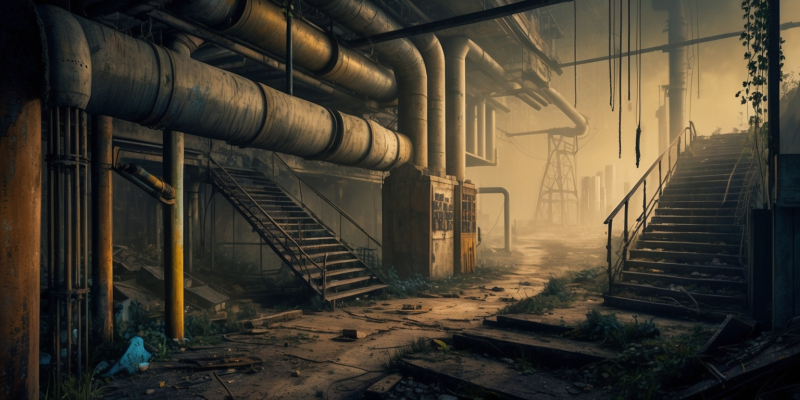Navigating Tariffs and Trade Uncertainty in the Gaming Industry: Reshaping Production, Policy, and Consumer Impact

The recent announcement of unexpected changes in industry practices has sparked intense debate among market leaders and enthusiasts alike. With trade measures now reshaping the landscape of production and international partnerships, the The interactive entertainment industry now finds itself at a critical turning point. Many are reassessing longstanding methods and innovative pathways, Laying the groundwork for a cascade of pivotal developments adjustments across multiple sectors. Beyond a singular corporate reaction, the shifting environment calls for a broader understanding of economic interdependencies and the delicate balance between global trade policies and consumer interests.
Shifting Trade Policies and Industry Vulnerability
The imposition of steep tariffs has revealed vulnerabilities within the gaming industry's global supply chains. Decision-makers now face the challenge of adapting to trade conditions that disrupt traditional manufacturing processes and international logistics. Industry experts emphasize that while a prominent console launch has drawn attention to these disruptions, the true impact spans a multitude of platforms and services. Tariff policies, originally designed as diplomatic tools, are now directly influencing costs and strategic planning. With products destined for markets around the globe, companies anticipate adjustments in pricing structures that reflect the heightened operational complexities. This evolving environment requires businesses to be proactive as they balance production needs against geopolitical uncertainties, ensuring that shifts do not result in broader economic repercussions.
Nintendo's Response Amid Tariff Uncertainty
A notable response to the changing trade dynamics comes from Nintendo, which recently deferred prerelease orders for its forthcoming gaming console. This decision, intended to evaluate the ramifications of escalating tariff measures, highlights the sensitivity of product launches amid an unpredictable economic climate. Nintendo’s strategic pause underscores the broader industry sentiment that these measures are not isolated to any single company. Instead, they present absorption challenges that affect cost planning, production scheduling, and market timing across the field. Such actions serve not only as a safeguard against immediate fiscal strains but also illustrate a calculated "a cautiously observational stance when confronted with" volatile trade conditions. Industry players are now reviewing their own strategies to accommodate similar market fluctuations.
Economic Ripples and Consumer Spending Shifts
The reconfiguration of international trade policies has cascading effects extending into consumer behavior. As tariffs elevate the cost base for production, companies are compelled to adjust retail pricing, potentially dampening consumer enthusiasm. A volatile economic environment coupled with higher prices may compel gamers to reprioritize spending, thereby influencing demand patterns and revenue predictions for publishers and hardware manufacturers alike. These economic ripples involve not only the end-user experience but also affect long-term research, development, and innovation investments. With every change in pricing structure, there emerges a corresponding need to reexamine the balance between cost and value. This interplay between manufacturer decisions and consumer responses continues to create a dynamic that every stakeholder must navigate with care.
Complex Supply Chains and Production Realities

Beyond immediate pricing challenges lies the intricate web of global supply chains that underpin the gaming industry. Many components that bring consoles and games to market are sourced from multiple international partners, each subject to local tariff regimes. Shifts in these policies mandate significant recalibration in how companies build and sustain their production infrastructure. The time and capital required to establish new or alternate manufacturing bases could stretch over several years, emphasizing the inherent inertia in the system. Companies are evaluating whether the potential financial strain justifies relocating production or rebuilding localized supply-chain networks. In essence, the challenge is not solely about rising costs; it is about restructuring entire operational models while grappling with existing contractual commitments and market expectations.
Consumer Ecosystem Transformations in a Volatile Market
Central to these changes is the consumer ecosystem, which is experiencing its own form of transformation in response to increased market volatility. As prices escalate and economic uncertainty becomes more prevalent, the enthusiasm for new releases and time-tested classics alike may wane. The gaming community, comprising a diverse mix of casual players to competitive enthusiasts, is highly sensitive to shifts in cost and access. Consequently, higher retail prices could lead to reduced engagement, as financial prudence takes precedence over discretionary spending. Simultaneously, there is growing concern over how these changes might inhibit the innovation that underpins the evolution of gaming technology. This interaction between market forces and consumer sentiment It emphasizes the fragile balance that must be carefully preserved in this vibrant ecosystem.
Political Dynamics and Their Global Echoes
The intersection of political decision-making and global trade policy has significantly impacted the video game industry, turning industry forecasts into complex policy debates. Recent announcements by political leaders have introduced a new layer of uncertainty, as sweeping trade measures affect countries around the world. With nations such as Japan, Vietnam, China, and various European partners facing the brunt of punitive tariffs, the geopolitical landscape is being redefined in ways that extend far beyond traditional economic models. The reaction from industry associations highlights the urgency in addressing these ripple effects—a call to navigate carefully through an environment where policy shifts translate into tangible operational and strategic challenges. This atmosphere demands a the finely tuned equilibrium between protecting national priorities and encouraging international collaboration.
Industry-Wide Consensus and Collaborative Negotiations
A broad consensus within the gaming industry has emerged, with trade associations and major publishers advocating for a measured response to the newly imposed tariffs. Within the corridors of influential organizations, discussions have focused not only on immediate financial implications but also on long-term structural adjustments that might be necessary. Industry representatives have engaged in dialogues with government officials, aiming to refine policies in ways that protect both American industries and the diverse consumer base. Efforts to collaborate across sectors are evident through ongoing negotiations with policy makers and trade representatives. By urging elected officials to consider the multifaceted effects on production, distribution, and innovation, industry leaders are working to mitigate disruptions while maintaining a commitment to technological progress and market stability.
Expanding Horizons in Gaming Technology and Platforms
The implications of tariff-driven shifts extend well into the crossroads of gaming platforms and technological innovation. With an increasing number of devices—from consoles to mobile systems and immersive headsets—playing pivotal roles in entertainment, the pressure to adapt is felt across various segments. Stakeholders anticipate that higher production costs might encourage a refined focus on efficiency, potentially spurring advancements in hardware design and software integration. However, these challenges also necessitate experimental business models and updated production techniques, aligning technological growth with sustainable cost management. The expansive digital ecosystem now includes a spectrum of experiences that are all indirectly tethered to global manufacturing and distribution networks, making the current policy landscape a critical factor in shaping future gaming trajectories.
Innovative Adjustments in Manufacturing and Product Development
The current environment of trade uncertainty has prompted the industry to revisit time-tested methods of product development and manufacturing. Companies are contemplating strategic delays and realignments as key tools for cushioning against economic shocks. Changes in production lines may involve significant investment not just in physical facilities but also in upgrading the operational and logistical frameworks that support device assembly and game development. This period of reassessment is driven by the need to forecast future costs accurately and to balance these against rapid technological innovations. A collaborative approach is being adopted within various consortiums, where shared risk and mutual learning become pillars for evolving manufacturing strategies. The result is an industry that is resilient and adaptive, prepared to revamp processes in a manner that ensures continuity and sustained innovation.
Collaborative Dialogue and Stakeholder Engagement
Engagement between industry leaders and government bodies is now more critical than ever in this evolving scenario. Key representatives from major gaming companies are actively seeking open discussions with policymakers to advocate for more balanced trade practices. This process involves detailed exchanges that frame the broader implications—from consumer impact and job security to long-term research and development. Elected officials are being urged to understand that these tariffs extend their influence over multiple layers of the industry. Through various channels such as formal meetings, policy briefs, and direct communication, stakeholders are ensuring that the voices of thousands of gamers and industry professionals are heard. Such collaborative efforts aim to forge policies that are sensitive to market realities and that promote a supportive environment for both domestic production and international partnerships.
Public Engagement and Future Policy Directions
The dynamic interplay between industry trends and governmental policy is increasingly becoming a participatory process involving concerned citizens. Members of the gaming community are encouraged to reach out to their representatives using diverse communication channels, ensuring that their concerns influence policy discussions. This form of engagement is recognized Not solely a reflection of democratic engagement but also as a crucial part of the pressure mechanism that might result in a more balanced and just outcome trade practices. With industry representatives highlighting the broad repercussions of current tariffs on technological progress and everyday experiences, the call to action is clear. Consumers, industry experts, and political stakeholders are collectively shaping a future where the needs of creators and players are interwoven into the fabric of economic policies and regulatory decisions.
Most Popular
-
![]() Top Apps
Embarking on a Multigenre Odyssey: Celebrating September's Gaming Innovations
A fresh month dawns, carrying with it it fresh opportunities for gamers seeking engaging and varied...
Read more
Top Apps
Embarking on a Multigenre Odyssey: Celebrating September's Gaming Innovations
A fresh month dawns, carrying with it it fresh opportunities for gamers seeking engaging and varied...
Read more
-
![]() Top Apps
Labyrinth of Industrial Decay: Charting the Putrified Ducts in Silksong
The labyrinthine corridors of Silksong's subterranean world burst into life with an atmosphere heavy...
Read more
Top Apps
Labyrinth of Industrial Decay: Charting the Putrified Ducts in Silksong
The labyrinthine corridors of Silksong's subterranean world burst into life with an atmosphere heavy...
Read more
-
![]() News
A Decade Later: FX Expands Blackthorne’s Journey with New Faces
This series, initially conceived as a one-off production, gathered such enthusiasm that FX decided t...
Read more
News
A Decade Later: FX Expands Blackthorne’s Journey with New Faces
This series, initially conceived as a one-off production, gathered such enthusiasm that FX decided t...
Read more



